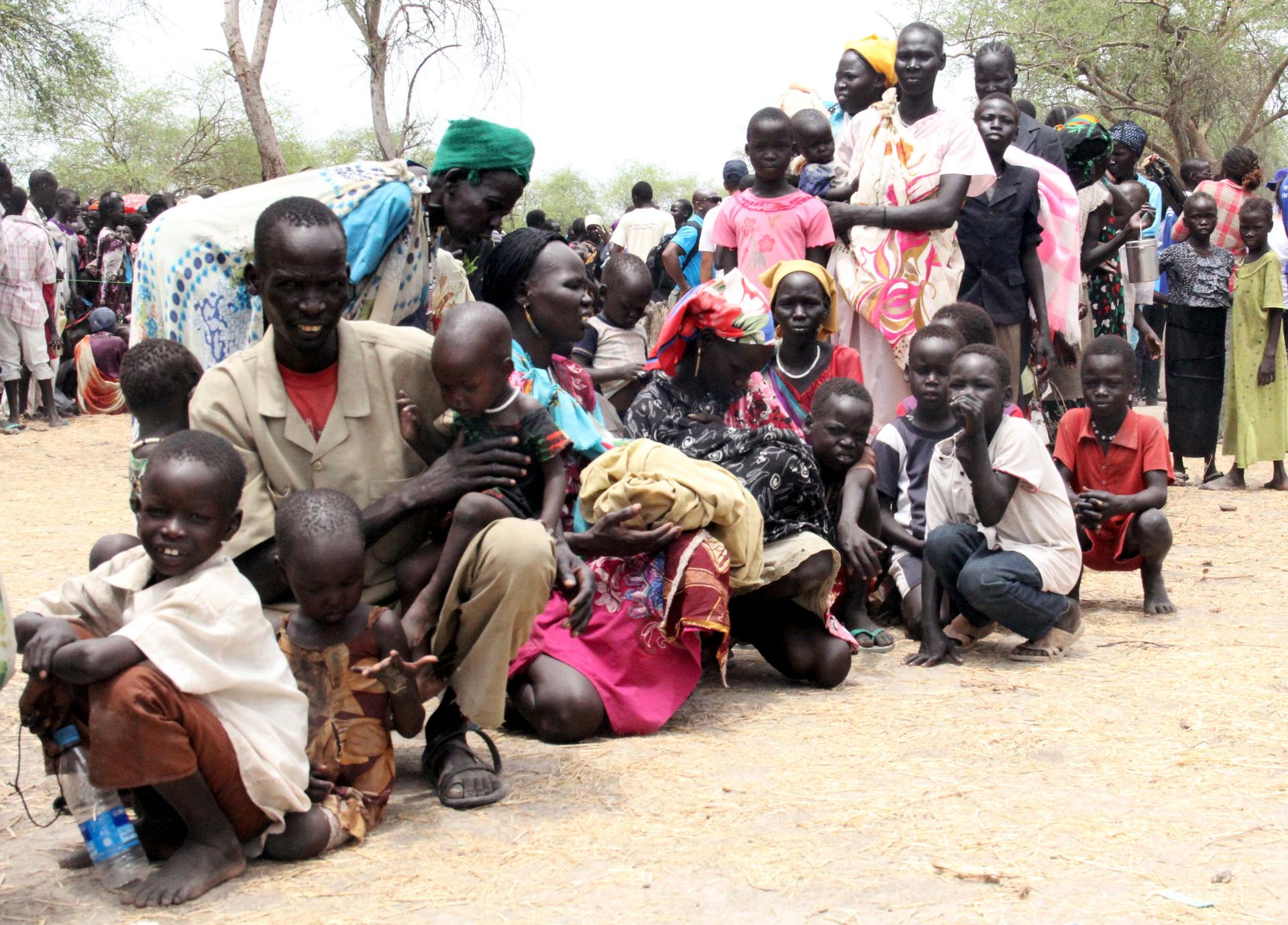South Sudan’s festering civil war is every bit as violent and deadly as decades of independence struggles
Residents displaced due to the recent fighting between government and rebel forces in the Upper Nile capital Malakal wait at a World Food Program (WFP) outpost where thousands have taken shelter in Kuernyang Payam, South Sudan, May 2, 2015.
When South Sudan became its own country in 2011, its citizens were exhilarated, celebrating in the streets. The country had been torn apart by civil war: 50 years of struggling for independence that left millions dead. At the time, New York Times’ columnist Nicholas Kristof wrote an optimistic column called Welcome to South Sudan!
World leaders were optimistic for a peaceful and potentially prosperous future.
The country had peace and it had oil, which meant the possibility of financial footing on the world stage. However, in the years since, the country has been fractured by government corruption and weak leadership. And then a new civil war erupted in South Sudan.
“You have the same atrocities that the north used to commit,” New York Times columnist Nicholas Kristof said. “You have mass rape, you have murder, you have castration of boys, you have just this kind of catastrophic brutality committed by their own people and in some cases by their own government.”
Kristof recently returned from a reporting trip through South Sudan, where he was faced with the horrors of war. While traveling through a marshland where people had taken refuge one man told him that “he watched from a distance as South Sudan government soldiers tied up his fifteen kids and put them in a grass hut and then they torched the hut and burned his family alive. You see people dying of this kind of brutality from the war.”
There’s an ethnic component to the war as well, said Kristof, who is not alone in suspecting that the government of Sudan is helping to fund the opposition in South Sudan. “In general, many of the government supporters are members of the Dinka tribe and many of the supporters of the opponent are members of the Nuer tribe,” he said. “It’s taken on a strong ethnic component that will be very hard to heal when a cease fire comes.”
And now famine is threatening areas of South Sudan where there hasn’t been fighting, “harming those parts of the country that are unaffected by the physical fighting, but where people are now dying of hunger.” Kristof said he saw women passed out on the streets, one of whom hadn’t eaten in three days, having left her kids with a neighbor, to seek work. They are “dying of civil war every bit as much as those who were shot,” he said.
During his recent trip to Ethiopia, President Obama and other leaders met to try to halt the conflict in South Sudan. He and other leaders urged the combatants to forge a peace agreement by Aug. 17, threatening sanctions against both sides.
However, past peace efforts have failed. And healing from such a brutal conflict is daunting. “These people have seen things,” said Kristof. “You can have these spasms of cruelty and barbarity that then haunt the country for years to come.”
This story first aired as an interview on To The Point with Warren Olney.
